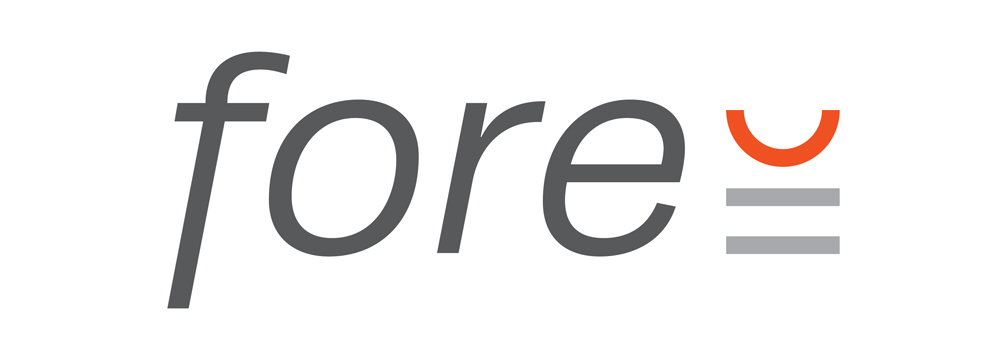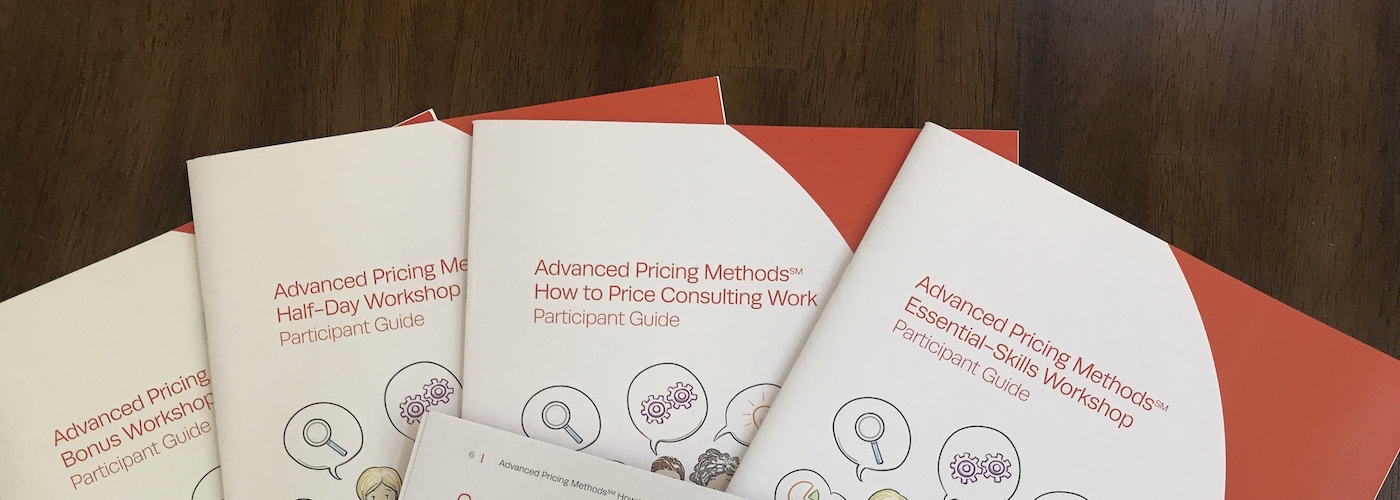Ever wonder how to price upfront and be very profitable when you do?
Advanced Pricing Methods® (APM) are the techniques I teach CPAs to price their work upfront, position their work for its highest-worth potential, and safeguard their profitability while they do it.
The biggest changes with APM®
To implement APM, CPAs do a handful of things slightly differently, but two differences are big.
- With APM, CPAs present their “wares” such that all focus is on the worth of buyer’s expected outcomes and results, rather than on the seller’s activities and tasks. This is a 180 degree change from how 99% of firms currently sell.
- With APM, the buyer has true certainty in price. There’s no more billing-and-ducking* because there is more transparency and clarity about what is and is not included in a price.
Various other characteristics of Advanced Pricing Methods® are illustrated in my FWIW blog post called Define & Compare CPA Pricing Approaches.
Offer price options or tiers
Advanced Pricing Methods® include how to incorporate options into your firm’s proposals. Some of my APM firms call this “optionality.”
Options are a terrific tool to communicate a whole slew of things to the buyer. They show what is and isn’t included in each respective price thus they help the firm prevent scope overages. They give buyers choices which translates to “control” which they seldom feel they’ve had in past transactions with firms—this greatly elevates the client experience (CX).
Position ‘what you get” vs what firms do
APM Essential Skills Workshops includes a lot of instruction about positioning your work in the most meaningful ways. By showing buyers exactly why and how your services are relevant to them, you increase the worth in their eyes. To do this, you have a richer dialogue on the front end of the sale—discovery—to understand what’s important to each unique buyer.
Price ahead of work
Pricing in advance is not a foreign concept to CPAs who have pre-priced audits and certain other work for years.
However, when it’s done with a certain caveat, it isn’t actually a price. It’s not truly a “price” if a firm states that the amount will be adjusted if “actual” work takes longer than the firm estimates it will. And of course it almost always does.
A price, by definition, is conveyed in advance. If a “price” changes later, it was never actually a price, it was simply an hours estimate. Even a “not to exceed” amount isn’t a true price; it is also an hours estimate.
With APM, firms honor the price they quote. When you learn how to price upfront, you’ll learn a more rigorous process to define scope so you can give your buyer clarity and transparency about specific factors that merit price changes.
When you provide price certainty, you increase customer trust. You then you preserve it by never, ever billing-and-ducking* again.
With APM, it’s not that firms won’t charge for extras, they do; they just don’t do it as a trust-damaging surprise. There are much better ways to simultaneously protect your profitability AND manage customer expectations.
The CPA-firm skill gap
Can I be frank? Our generations-old, time-based billing model contributed to a very unhealthy safety net: billing time overages as a routine back-up plan for our crappy, er, suboptimal price estimates.
Somehow we and our firms got fairly comfortable issuing post-project “surprise” bills for these time overages. It was never “good” to do this, but pointing to our hours, we could justify to ourselves and our customers sufficiently enough to keep doing it. But I assure you, no one likes this. Would you?
Over time, this standard practice has led to two unfortunate skill deficits in public accounting (and others who charge for time). Almost no one has 1) well-developed project-definition skills or 2) solid project-management skills.
Almost all discomfort around committing to a price upfront without the caveat (above) stems from low confidence in our project estimates. That’s scoping. Today’s scoping-skill deficit isn’t the fault of today’s CPA; it’s a product of the long-time, normalized practice of billing for time overages.
How to price upfront with greater comfort?
The number one way to prevent scope creep is really good project definition.
The second way is to be equally good at managing to that project definition.
Great project definition plus project management will correct most of margin-erosion even for work that’s not priced in advance. But this pair of skills is important when firms price up front. With scope clarity, you’ll have much better communication with both customers and team members.
______________
*Billing and Ducking is when we hit clients up to pay “surprise” bills after the work was already done. As someone who used to bill hourly and have done this occasionally, I know that’s exactly what it felt like: ducking after sending my bill in hopes the client wouldn’t complain and just pay it. No one likes doing this… we know this by observing how much we elect to write off instead.
(This blog post was modified in 2024.)


Recent Comments